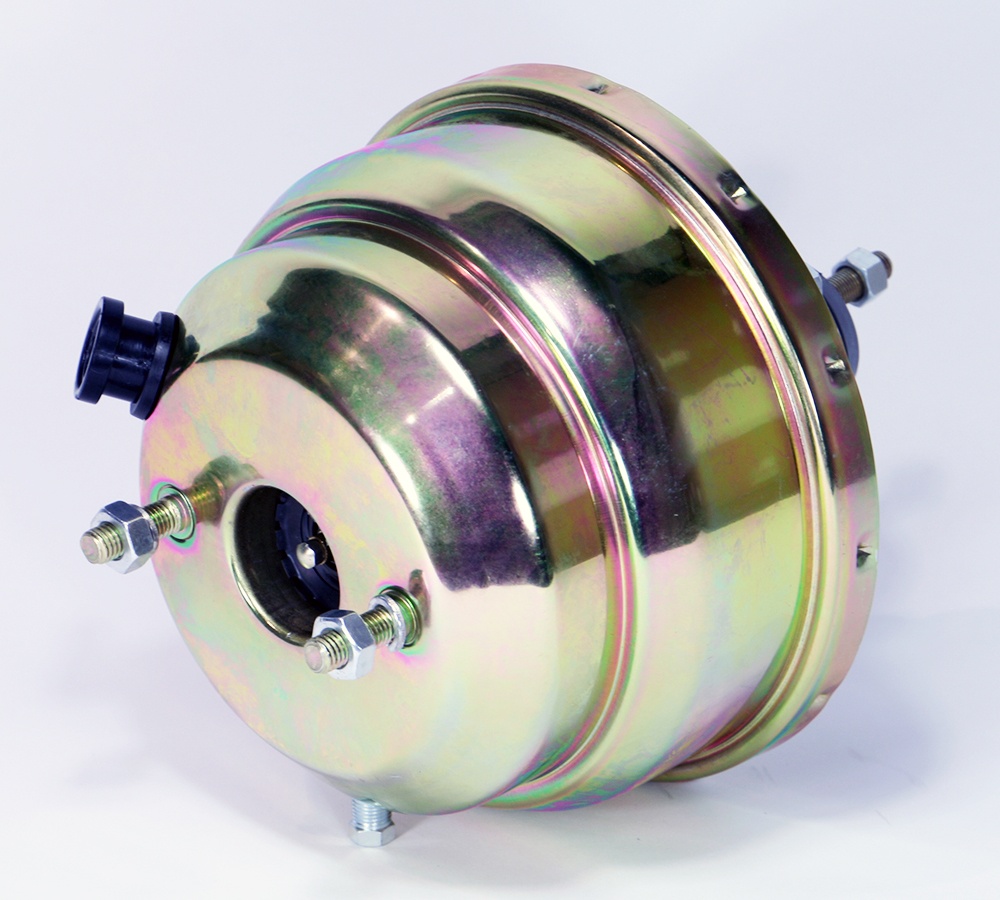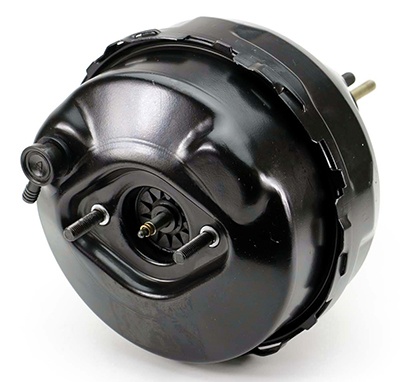
”I want to convert my car to power brakes from the current manual brakes but there are so many options of different booster sizes. Can you help me pick the correct one?”
We get that question at least a few times a week and every one of the people that have asked that question is correct. There are a lot of options. Let’s look at a possible scenario using a late-60’s Chevrolet C-10 Truck as an example and see if we can shed some light on what you should be looking for and which one to choose.
If a customer gave us this scenario, we would then be forced to ask questions of the customer and we would start with asking if the vehicle is disc or drum brakes. We have to ask this question right up front because it will dictate which direction we might take. If a customer was using disc brakes in the front and even disc brakes in the rear, we cannot recommend a large enough booster.
To the contrary, if a customer is keeping the truck drum brakes but is just looking to make the pedal feel a little better, too large of a booster might make a vehicle tough to drive due to the very touchy brakes the vehicle would now have. So, for our example here, let’s assume the customer is electing to go with four-wheel disc brakes and the truck is being powered by a hopped up small block Chevrolet.
For this example, we would focus the customer towards a 9” dual diaphragm booster (p/n: BM17875-1 or 2). This would include a master cylinder of either a 1” bore or a 1-1/8” bore depending on what had been chosen for the calipers (we will discuss this in another post).

We would choose this option as the 9” dual has as much potential assist as any booster we provide and because the customer is using a SBC engine, there is plenty of room available. If the customer were using a BBC for an engine, we might be forced to drop back an 8” dual diaphragm booster.
Why you ask? The simple answer is room. You may want to use a larger booster but some applications only provide a certain amount of room. Therefore, we put as much booster in the space we have available.
Now, let’s change the scenario up a little. Let’s say the customer is wanting to keep the factory drum brake system. Room would again enter into the equation but our focus now becomes not putting too much booster on the vehicle. This is a worry as too large a booster would make the drum brakes apply very quickly which would put you through the windshield. This is a very uncomfortable feeling. The brake pedal would almost have the feel that the brakes were connected to an on/off switch with no middle ground. In this case, we would recommend a 9” single diaphragm system which is a great choice for drum brake equipped vehicles.

Now that we have told you which direction we would send you, we think it is important to understand what the number of diaphragms means along with the size. The simplest way to look at it is the booster provides assist. It stores vacuum and when the pedal is applied, the diaphragms within the booster move to equal the air on both sides of the chamber and therefore push the pin in the master cylinder downward to apply the brakes.
To give an overly simplified formula using some standardization), to determine the amount of assist, take atmosphere which is roughly 14.7 pounds per square inch and multiply that times the size of the diaphragm within the booster. For example, if you were instructed to use a 9” dual diaphragm booster, you would multiply 14.7 (atmospheric pressure) by 9 (diameter of the diaphragm) and then multiply that number by 2 (number of diaphragms within the booster). This would provide a total assist of 264 pounds. In comparison using the same math, a 9” single diaphragm booster would only provide 132 pounds of assist. These are very simplified numbers but you can quickly see the trend and how it affects the decision of which booster to choose.
Unfortunately, there isn’t a guide to go by that simplifies it down to vehicle weight. Just remember, if it is a disc brake system, use as large a brake booster with as many diaphragms as possible to give the most amount of assist. If it is a drum brake car, be more selective with your choices and err on the side of smaller so that the car is still comfortable to drive. After all, we want to drive them!! If you are still stumped or have questions, give us a call or shoot us an email. We will gladly walk you through the steps to determine what is best for your application.
